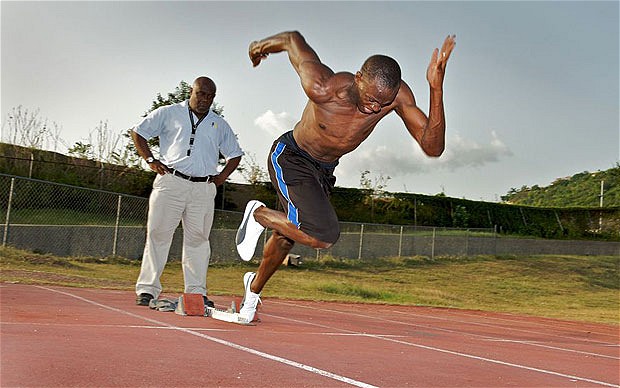When you think about running technique the first thing that comes to mind isn't usually geometry, but maybe it should be. One of our specialties in our Westchester and New York physical therapy offices is retraining runners when their technique causes injury and our main diagnosis always comes down to the geometry of a runner's stride. Whether you're cleaning up your running technique to heal from injury or just to shave seconds off your race time, these simple ideas will definitely help, and don't worry-- you don't need to be a math whiz to put them into practice.
First things first, start to think of running as a state of constantly falling forward. Running is all about moving forward, so ditch any effort into the vertical and focus on finding yourself in a position that feels like a constant movement forward. Once you have this down a few things start to fall into place, for example you almost naturally start to run on the balls of your feet and you stop heel striking, which leads to a better time and a healthier body.
Once you're comfortable with that idea (running is falling forward!) you can start to take a look at stride angles. The stride angle is the angle of opening between the legs, measured from the hips to the knees. The larger the stride angle, the more ground a runner can cover. Studies have shown that for every one degree you increase you stride angle, you increase your stride length by two percent. It doesn't sound like much, but when you're running a race and your stride angle is six degrees larger than your opponent's, that means you're covering twelve percent more ground than the guy next to you. Good luck keeping up with that.
Extra Credit: Find out the percentage of ground gained by runner number one over runner number two based on their stride angle. (Hint: runner number one is the winner)
Now that we have the math out of the way you're ready to implement these findings into your training. This is where you might start to need the help of professionals. Before you can even get started with your own training regimen you'll need to undergo a running analysis to determine whether you strike with the heel or the ball of your foot, your stride angle, stride length, and your gait. Depending on this analysis you might need to work on gaining flexibility in your hips in order to increase your stride angle, or any other dozens of tricks to help you run better, faster, and stronger.
Just one of our awesome pieces of equipment to help you on your way to a healthier body and a faster running time found in our Upper West Side Physical Therapy office
As always we like to stay one step ahead of the competition when it comes to physical therapy in New York City or in Westchester. You might say our "stride angle" as an office is increased by our amazing staff, cutting edge equipment, and in-depth research on how to get your running technique to your maximum performance abilities.





